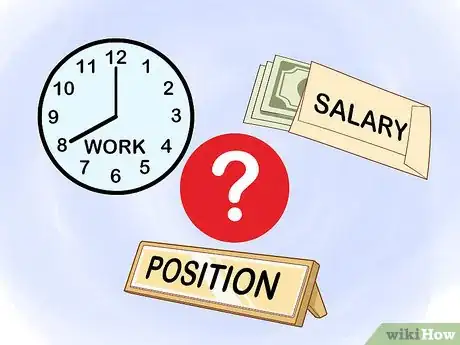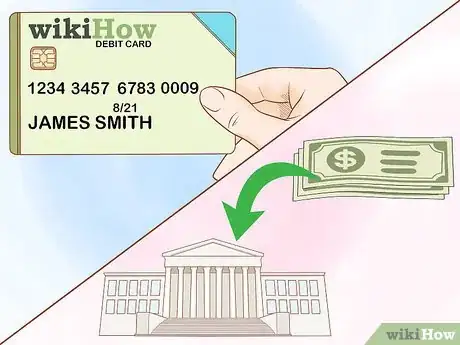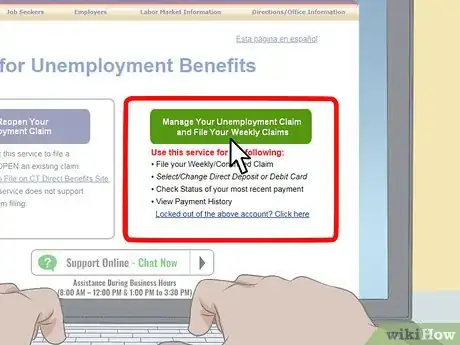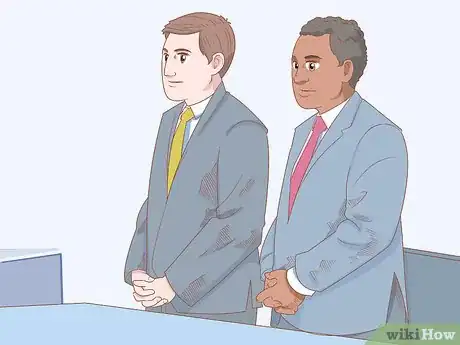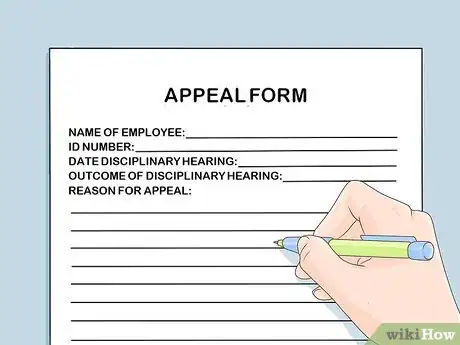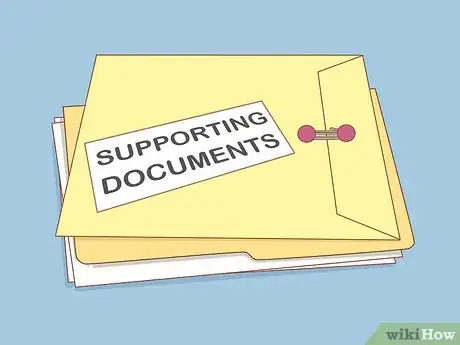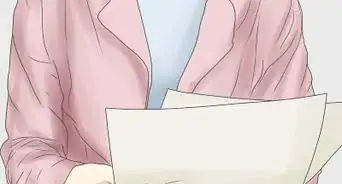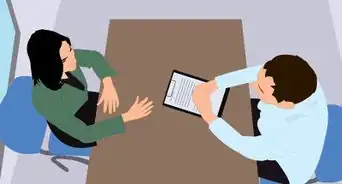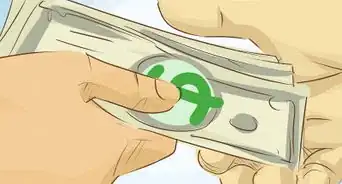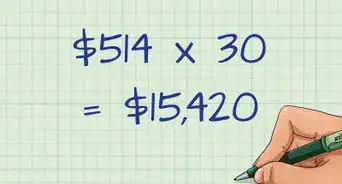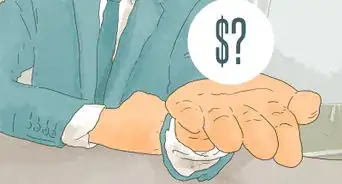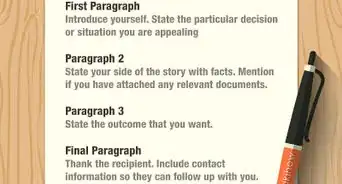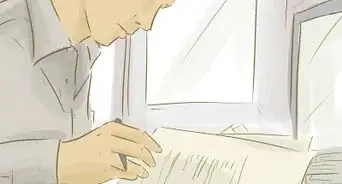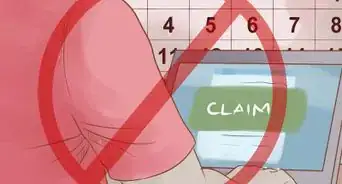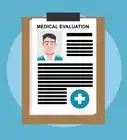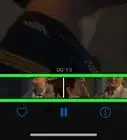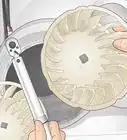This article was written by Jennifer Mueller, JD. Jennifer Mueller is an in-house legal expert at wikiHow. Jennifer reviews, fact-checks, and evaluates wikiHow's legal content to ensure thoroughness and accuracy. She received her JD from Indiana University Maurer School of Law in 2006.
This article has been viewed 5,691 times.
Losing your job can be a frightening thing, and you may not know where to turn or what to do next. Particularly if you lost your job through no fault of your own, you may feel as though the rug was pulled out from under you. It's important to start your search for a new job immediately. In the meantime, you may be eligible to collect unemployment benefits. If you live in Connecticut, file your claim for unemployment with the Connecticut Department of Labor. You'll receive your benefits each week, either through direct deposit to your bank account or on a prepaid debit card.[1]
Steps
Filing a New Claim
-
1Check your pink slip. Employers are required to give pink slips to all employees whose employment is terminated, regardless of the reason. An application packet for unemployment benefits is attached to your pink slip form.[2]
- The pink slip lists the reason your employment was terminated. This reason may affect whether you are eligible for unemployment.
- Your pink slip also includes information about your employer and your income, which you will need to file a claim for unemployment.
-
2Create an online account. You can initiate a claim for unemployment benefits 24/7 using the Connecticut Department of Labor's online system. Go to http://www.ctdol.state.ct.us/UI-Online/Index.htm and click the blue button to get started.[3]
- Proceed through to the Direct Benefits page, then click where it says "Click here to create an account" and provide the requested information. You must have a valid email address to create an account.
- Once you create your account, go back and click the blue button again. You can log in with your user name and password to open a new claim.
Advertisement -
3Provide information about your previous employment. In addition to basic information about yourself and your employer, you will need to answer questions about the length of time you worked there, your job title, and how much you were paid.[4]
- Include the reason you were terminated, as stated on your pink slip. If you don't have a pink slip, go with what you were told.
- Answer all questions completely and honestly, even if you're afraid the truth might mean you aren't eligible for benefits. You may be required to pay back benefits you've already received if you lie on your application.
-
4Select your payment method. Once you've entered your claim information, you'll be asked how you want to receive your benefits. You have the choice of getting a reloadable, prepaid debit card, or having the funds direct-deposited into your bank account each week.[5]
- There are no fees associated with direct deposit. If you choose the debit card option, you may have to pay fees if, for example, you withdraw funds from an ATM. It will also take 7 to 10 days to receive your debit card in the mail, which may delay your access to your benefits.
-
5Check your email for your verification notice. When you initiate your claim online, the Department of Labor will send you an email when your claim has been received and is being processed. This email contains important information regarding your claim status and the next steps in the unemployment process.[6]
- Save the email for future reference. You may also want to write down any deadlines or other important dates.
-
6Participate in a phone hearing if necessary. The Connecticut unemployment system is designed to provide benefits to people who lost their job through no fault of their own. If you quit your job or were fired for cause, an additional hearing may be necessary to determine whether you're eligible for unemployment benefits.[7]
- You'll receive a notice with the date and time for the hearing. Make sure you're available during that time, and that you're in a quiet place where you can hear and respond.
- Your former employer will also be given notice of the hearing. Your boss or another representative may also be on the line during the hearing.
- During the hearing, a fact finder from the nearest American Job Center will determine whether you're eligible for benefits. Both you and your former employer will have a chance to explain the situation and provide proof to back up your arguments.
- If the fact finder decides you aren't eligible for benefits, you'll have the opportunity to appeal. On the other hand, if the fact finder rules that you are eligible, you'll receive retroactive benefits from the date you filed your claim.
Managing Your Claim
-
1Register with the nearest American Job Center. If you are receiving unemployment benefits, you must register for job search services and assistance at an American Job Center. These centers combine state, regional, and local resources to help you find a new job.[8]
- To find the American Job Center nearest you, visit http://www.ctdol.state.ct.us/ajc/FactSheets.htm.
-
2Keep a record of your job search contacts. Set up a table or spreadsheet with the names of all your contacts, dates, and the status of your application. Create columns for the date you submitted the application, dates of any follow-up phone calls, and the dates of any interviews.[9]
- Sample job search logs are included in the Connecticut Department of Labor's guide to unemployment benefits, which you can download at http://www.ctdol.state.ct.us/progsupt/unemplt/claimant-guide/uc-288.pdf.
- Staff at the American Job Center may periodically review your records to see how your job search is going, or to confirm that you're actively looking for work.
- The Labor Department randomly audits records of people receiving benefits. If you can't provide this information, the Labor Department may declare you retroactively ineligible, which would mean you would have to pay benefits back.
-
3Certify your claim each week. Each week you received benefits, go back to http://www.ctdol.state.ct.us/UI-Online/Index.htm and click the green button to file your weekly claim. You will need to certify that you are able and available for work, and that you have made reasonable efforts to look for work.[10]
- If you refuse an offer of employment, you have to explain why or you may lose your eligibility for benefits.
- You aren't required to take any employment offered – only employment that is suitable given your education and experience. For example, if you were previously a college professor, you would not be expected to take a job as a cashier in a fast food restaurant to continue receiving unemployment benefits.
- There are no specific requirements for the number of employers you should contact each week. Generally, contacting 2 or 3 employers a day, 3 or 4 days a week, is sufficient.
-
4Submit to periodic interviews. While you're receiving unemployment benefits, you may be interviewed periodically by a staff member at the American Job Center. They will ask you questions about your job search and offer advice and assistance.[11]
- Interviews are randomly selected. You'll receive an email notification if you've been called up for an interview. It doesn't mean there's something wrong with your claim or that your benefits are going to be cut off.
- If you get a notification of an interview, it is mandatory that you attend. If you fail to attend your interview, your benefits may be suspended or terminated.
-
5Complete an assessment if selected. Unemployment claimants may be randomly selected to participate in a federally funded program designed to help you get back to work faster. If you're selected, your participation is mandatory.[12]
- The program starts with an in-person interview and assessment of your work search efforts. You will also receive information about services available through the American Job Center.
-
6Attend hearings if necessary. If serious questions are raised about your continued eligibility for benefits, a hearing will be scheduled to discuss the issue. The Department of Labor will send you notice of the hearing, which will also list specifically what issues are going to be discussed.[13]
- Bring any documents, witnesses, or other information related to the issues listed on your notice. You can hire an attorney to represent you at the hearing if you want.
- If the Department of Labor Adjudicator decides to deny your continued receipt of benefits, you can appeal that decision to the Employment Security Appeals Division.
Appealing an Unfavorable Decision
-
1Read your disqualification letter carefully. If at any point the Department of Labor decides you are not eligible to receive (or continue receiving) unemployment benefits, you'll get a written letter that specifically states the reason you're not eligible.[14]
- If you believe the decision is incorrect, gather documents and information to support your argument. You'll need to present this information on appeal.
- Your disqualification letter also includes information about how to appeal, including the deadline for filing an appeal.
-
2Fill out an appeal form. An appeal form will be included with your disqualification letter. You can also pick up a blank form at the American Job Center, if you lose the form sent with your disqualification letter.[15]
- Fill out the form neatly, and answer every question completely. If you have additional documents you want the Appeals Referee to consider, you can attach them to your form.
- Make a copy of your completed appeal form for your own records before you file it.
-
3File your appeal at a full-service American Job Center. Once you've completed your appeal form, take it to one of the six full-service American Job Centers. This may not be the same center you previously used for job search assistance.[16]
- The full-service American Job Centers are located in Bridgeport, Danielson, Hamden, Hartford, New London, and Waterbury. Choose the location that's most convenient for you.
- You must file your appeal within 21 days of the date on your disqualification letter. If you mail it rather than taking it in person, it must be post-marked within 21 days of the date on your disqualification letter.
-
4Gather documents and witnesses. The first appeal hearing is a little more formal, a bit like a trial. You are allowed to present evidence to support your claim, as well as call witnesses to testify on your behalf. You can also be represented by an attorney if you choose.[17]
- Continue to file weekly claims if you believe you are entitled to receive unemployment benefits. If the Appeals Referee rules in your favor, you'll be able to get benefits only for the weeks in which you filed a claim.
- If you don't speak English well, you can have an interpreter at the hearing at no cost to you. Let staff at the American Job Center know when you file your appeal. You can write it on your appeal form if you're mailing the form.
-
5Tell your story to the Appeals Referee. The Referee in charge of the appeals hearing will give you the opportunity to explain why you believe you are eligible to collect unemployment, or why you believe the decision to deny your claim was wrong.[18]
- Speak in a clear, loud voice, and stick to the facts. Treat the Referee and all other personnel with politeness and respect.
- If the Referee asks you a question you don't understand, ask them for clarification before you answer.
-
6Send a written statement to the Board of Review. If you disagree with the Appeals Referee's decision, you have 21 days from the date on the Referee's written decision to appeal to the Board of Review. The Board of Review looks at all the material in your case file, but does not have a new hearing.[19]
- The decision from the Appeals Referee will explain how to appeal. Read the instructions carefully. Talk to an attorney if you don't understand what you need to do.
- The Board of Review makes a decision whether to affirm or overrule the previous decision of the Appeals Referee. You'll receive written notice of this decision, but it may take as long as 6 months.
- If you believe you are still entitled to unemployment benefits, you should continue to file weekly claims and actively seek employment.
-
7Consult an attorney who specializes in unemployment. You can take the case to Connecticut Superior Court if the Board of Review also rules against you. Filing a case with the Superior Court is a complex and formal matter. If you haven't already hired an attorney, it's a good idea to get one to help you before you take your claim to this level.[20]
- Many attorneys who specialize in unemployment law provide free initial consultations. Because they are sensitive of your situation and the fact that you likely have limited resources, they will be willing to work with you on payment arrangements. In some cases, you may also qualify for free legal assistance.
References
- ↑ http://www.ctdol.state.ct.us/progsupt/unemplt/claimant-guide/uc-288.pdf
- ↑ http://www.ctdol.state.ct.us/progsupt/unemplt/claimant-guide/uc-288.pdf
- ↑ http://www.ctdol.state.ct.us/progsupt/unemplt/claimant-guide/uc-288.pdf
- ↑ http://www.ctdol.state.ct.us/progsupt/unemplt/claimant-guide/uc-288.pdf
- ↑ http://www.ctdol.state.ct.us/progsupt/unemplt/claimant-guide/uc-288.pdf
- ↑ http://www.ctdol.state.ct.us/progsupt/unemplt/claimant-guide/uc-288.pdf
- ↑ https://ctlawhelp.org/en/your-rights-when-you-apply-for-unemployment-compensation
- ↑ http://www.ctdol.state.ct.us/ajc/FactSheets.htm
- ↑ http://www.ctdol.state.ct.us/progsupt/unemplt/claimant-guide/uc-288.pdf
- ↑ http://www.ctdol.state.ct.us/progsupt/unemplt/claimant-guide/uc-288.pdf
- ↑ http://www.ctdol.state.ct.us/progsupt/unemplt/claimant-guide/uc-288.pdf
- ↑ http://www.ctdol.state.ct.us/progsupt/unemplt/claimant-guide/uc-288.pdf
- ↑ http://www.ctdol.state.ct.us/progsupt/unemplt/claimant-guide/uc-288.pdf
- ↑ http://www.ctdol.state.ct.us/progsupt/unemplt/claimant-guide/uc-288.pdf
- ↑ https://ctlawhelp.org/en/your-rights-when-you-apply-for-unemployment-compensation
- ↑ http://www.ctdol.state.ct.us/progsupt/unemplt/claimant-guide/uc-288.pdf
- ↑ https://ctlawhelp.org/en/your-rights-when-you-apply-for-unemployment-compensation
- ↑ http://www.ctdol.state.ct.us/progsupt/unemplt/claimant-guide/uc-288.pdf
- ↑ https://ctlawhelp.org/en/your-rights-when-you-apply-for-unemployment-compensation
- ↑ https://ctlawhelp.org/en/node/466
- ↑ https://ctlawhelp.org/en/your-rights-when-you-apply-for-unemployment-compensation
- ↑ https://www.ctdol.state.ct.us/progsupt/unemplt/new-faqui.htm
- ↑ http://www.ctdol.state.ct.us/progsupt/unemplt/claimant-guide/uc-288.pdf


